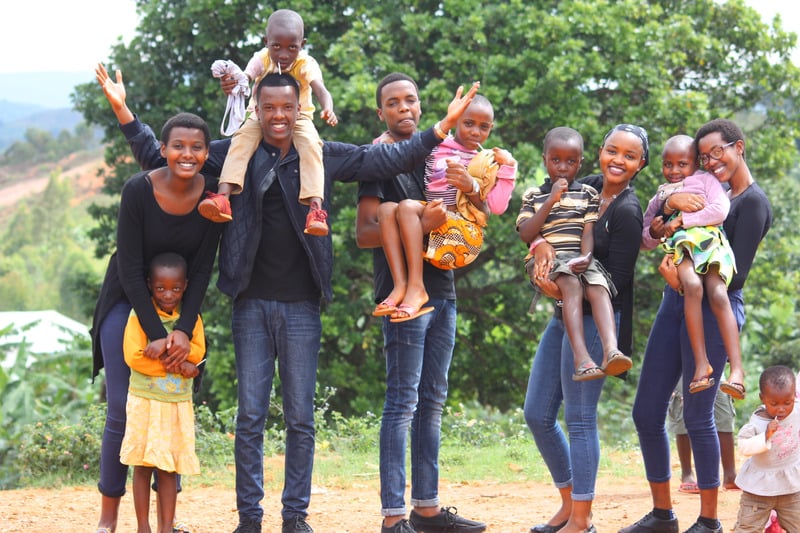
Family forms an integral part of our lives. Despite the hectic lifestyle, the dynamics shared in the family continues to be the soul of any individual. When it comes to family dynamics meaning – it is a set of interactions that happen within families. Though some share a hate-love relationship, yet every person confides in the family. And these interactions, style of communication forms the backdrop of family dynamics.
But what is family dynamic? And what are the various family structures? That’s what we are going to cover in this article. So, don’t skip, but keep reading to know all about family dynamics.
Family Dynamics Meaning
Family dynamics are all about the functioning of a family in a good and bad situation. It also includes the ways of decision-making, problem-solving, or even sharing their feelings. Thus, it helps individuals to judge themselves as well as the outside world. Besides, it also influences their relationships and behavior. Indeed a study reflects that stronger family relationships help in coping with stress. They also boost the well-being of an individual.
Further, poor relations can take a toll on an individual’s physical and mental health. So, when a child experiences depression, the therapist studies family dynamics. With this, they get to the root cause of the problem. Alongside this, Structural Family Therapy by Salvador Minuchin is also useful. It helps in studying the functioning within the family.
Despite this, many are unaware of various family structures. Besides, they imagine families like a television serial. For them, it is a unit that comprises of mother, father, and child. Therefore, we are going to mention some of the family types and their effect on family dynamics.
Types of Family Structures & Family Dynamics Meaning within it
1. Nuclear Family

SUMMARY
Though this family structure is common and basic. It is the most ideal structure to raise children. It consists of two parents and children.
Nuclear families are also known as the traditional family structure. These families consist of husband and wife (two parents) along with children. Besides, there could be more than two children either biological or adopted. But the aim of this family is to raise the children independently and with togetherness. According to the U.S. Census Bureau, 69% of children under the age of 18 continue to live in a family with two parents.
Advantages
- Financial stability
- Stable parenting
- Education, health, upbringing, is a top-notch priority
- Emphasis on efficient communication
Disadvantages
- Loneliness because of no extended family
- Isolation leads to stress and depression
- Resolving conflicts can become difficult
2. Single Parents

SUMMARY
After the nuclear family, single parenting has become very common. Either a mother or father alone raises a child with great love and affection.
Single parent family consists of a single parent raising one or more children. The single parent could be a mother or a father. In this family structure, the parent is either married, single, widowed, or divorced. Rather this family structure is one of the common family arrangements. As per statistics, 17.2 million children under 18 live with a single mother and 3 million with a single father.
Advantages
- Sharing of household duties with kids
- Family and relative’s support
- Children and the parent become strong to face any situation
Disadvantages
- Financial instability
- Limitation on job opportunities and income
- Finding childcare becomes difficult
3. Extended Family

SUMMARY
Extended families consisting of uncles, aunts, nieces, and nephews are becoming common. It helps in giving mental and financial support to one another.
The extended family comprises two or more people who are either related by blood or marriage. They live in the same house with many other relatives like aunts, uncles, grandparents, or close family and friends. When both parents are working and do not spend quality time with children. Then there are chances that children might feel ignored and frustrated. But in such situations, the extended family comes to the rescue.
An extended family shares a common goal. They raise the child, support each other, and maintain the household duties. Also, members of extended families share a strong emotional bonding.
Advantages
- Constant support especially in case of emergencies
- Financial, mental, and social support
- Division of chores and income
Disadvantages
- Lack of privacy
- Financial burden or instability of income (if members aren’t contributing)
- Interference in other relationships

4. Childless Family

SUMMARY
Childless family is the one that chooses to not have children. In such cases, either they choose to postpone childbirth, or infertility causes complications. While some prefer career and enjoyment over children.
A childless family consists of partners who do not have children. Amidst them, most of them wish to have children, but think that it isn’t right for them! While some want to have children but due to health issues cannot bear a child. And some opt for voluntary childlessness – to succeed in a career, enjoy life or travel. A survey conducted by the Pew Research Center also has a similar take. It highlights that around a quarter i.e. 23% childless adults under 50, don’t want to have children at all. But such couples prefer to have pets or shower love on their friend’s children.
Advantages
- No dependency
- Abundant income
- Couples get more time to spend with each other
- Cherish other activities like adventure, travel, etc.
Disadvantages
- Sometimes feel isolated
- If they love kids, then they feel like something is missing
5. Grandparent Family

SUMMARY
Sometimes grave situations force grandparents to raise their grandchildren. Though they might not be fit yet they are the ones who mold children in the best possible ways.
One of the least common family structures is the grandparent’s families. Grandparents get involved in raising children when the parents get embroiled in severe circumstances. These situations could be an arrest, undergoing medical treatment, or on drugs. And grandparents step in to avoid children ending up in foster care.
Also, such situations may impact the well-being of the child. But with grandparents, they can cope up within no time. Moreover, in a grandparent’s family, they ensure to look after the child with caution and care.
Advantages
- Grandparents form a strong family while maintaining a healthy relationship with children
- Children raised in affection and care
- Secured feeling and a way to learn moral values
Disadvantages
- Grandparents have to find a source of income
- Owing to health, their energy levels to do not match with kids
- Generation gap may lead to conflict in thinking
- Compassion may lead to indiscipline mannerism
6. Stepfamily

SUMMARY
Many divorced, separated or single form new relationships, thus starting a stepfamily. A stepfamily is also called a blended family and it can get challenging at times. But it depends on the people involved in this structure.
Today, most of the marriages end in divorce. Besides, many of them opt for remarriage. And that’s when it forms a stepfamily. In this scenario, two different families blend to form a unit. It may consist of a new husband or wife and children from their past relationships. Stepfamily may lead to adjustments for parents as well as children. And family members might experience anger, frustration, confusion, or even jealousy. But it all depends on how they tackle the situation with love and care!
Advantages
- Children have a big family and siblings from both their parents
- Both the parents are always around
- Children form strong bonding with both families
- There is financial security from both families
Disadvantages
- It might get tough for children to adjust
- Parents might have fights over their respective kids
- Children may become undisciplined
NOTE
It doesn’t matter which family structure you fall in. But it is important to add positivity. If you support and love each other, then happiness will follow with open hands.
So, now we have seen various family structures – their advantages and disadvantages. Besides, there are types of family dynamics namely healthy and toxic. So, let’s explore more about them.
Healthy Family Dynamics
A functional family ensures to nurture healthy family dynamics. And to maintain a safe family environment. It’s not about safety alone but in a healthy family, there is love and respect for one another. And to achieve this, several times, parents or members of the family set boundaries. While this sounds easy but for a carving a perfect family, regular practice is mandatory.
Signs of healthy family dynamics
1. Communication is a top-notch priority. In a healthy family, there is an understanding level. Family members evaluate situations without passing any judgment. Also, everyone gets an equal chance to express themselves. And all this adds to healthy dynamics.
2. Healthy families accept each other. But they do not tolerate physical abuse or toxic behavior. They accept the choices of the children. For example, if one of the parents is a prodigy but the children are not. That doesn’t mean they will stop loving the kids. Rather, they will keep encouraging them for the best.
3. In a healthy family, repairing damaged relationships is a top-notch priority. For example, a family member will not go to bed without resolving his/her issues with others. This is why the foundation of such a family dynamic is stronger.
4. If there is a vulnerable family member, like a mentally ill or a problem child. Then that member receives abundant love and compassion. There is a sense of understanding towards that member. Further, every family member comes together for decision-making that will benefit everyone.
5. In a healthy family, every member gets involved wherein they work and play together. Besides, a study states that when parents share responsibilities for playful activities with children. Then it may help in promoting the child’s cognitive development. For example, playing video games, planning a picnic with friends, inviting friends’ home, or taking your child to your office to explain your job.
6. The responsibilities are appropriately shared owing to age and flexibility. Moreover, there is always room for forgiveness in a healthy family.
Impact of healthy dynamics
Social support imparted by family positively affects an individual. A close-knit family is the backbone of an individual. Furthermore, providing emotional as well as financial support. Also, children who live with their biological parents enjoy better emotional as well as academic well-being. They also fare better if they witness that parents are working to resolve their marital problems. Furthermore, having close family and friends around helps in maintaining good health.
Now we know how it is to live in a healthy environment. So, let’s explore toxic family dynamics.
Toxic Family Dynamics
Not every person is born into a happy family system. Because some live in a toxic family life. If there is love and respect in a healthy family. Then toxic relationships are all about discrimination, abuse, or even manipulation. Thus, toxic family dynamics affect members by pulling them towards depression or mental illness.
Signs of a toxic family
1. The toxic family member provides no emotional support to any member or children. Thus, leading a child into emotional detachment. Not just this, there is a tinge of favoritism by focusing only on the oldest child and neglecting others.
2. There is unhealthy control within toxic parents exercised for selfish motives. For example, emotional blackmailing, or over-controlling. According to a study children with controlling parents have lower mental wellbeing in their adulthood. And such an incident might also hamper their adulthood relationships.
3. When dealing with toxic family dynamics, the children and parent roles get reversed. If one of the parents chooses to stay away or is absent due to drug or alcohol abuse. Then children have to take care of themselves. Children take up the daily duties of parents like – cooking, cleaning, and so on.
4. There is an environment of dominance in toxic families. Which means that one of the family members rules and decides everything. There is no consideration of the opinions or views of the other family members. Such a situation may also occur when there is an older toxic sibling who likes to rule over the younger ones.
5. Violence is the key highlighter of toxic behavior. Then it could be physical, psychological, sexual, financial, emotional, and abusive relationships. Growing up amid domestic violence may also lead to mental illness, depression, or even drug abuse.
6. There is no room for privacy while there is a lack of empathy. In toxic family dynamics having personal possessions becomes difficult. Because they are either destroyed or borrowed for an indefinite period without consent.
Impact of toxic dynamics
If a child is witnessing separation between parents, then that may affect him/her before the actual separation happens. They start distancing themselves from both parents and avoid living with either of them. Separation may also lead to economic instability if a mother heads the family. It affects the child as well as hampers the mental health of the mother. Thus, affecting parenting and also the child’s well-being. The entry of the stepfamily may also harm the child.
Most importantly, children or adults who get victimized in such a toxic environment embrace alcoholism, drugs, or even self-harm. So, now we have explored the types of family dynamics. But did you know there are various roles within family dynamics? Because of these dynamics, children start taking up different roles. Let’s see what they are.
Various Family Dynamics Roles
Every member plays different roles within the family owing to the family dynamics. They also emerge because of the choices we make or owing to our personality. Also, when negativity overpowers any family, then these family roles play a vital role in the welfare of the family system. So, let’s see what they are.
1. Hero
In a family, there is always a member who is an ‘achiever’ and also maintains the pride of the family. He/she is a leader, self-disciplined, and over-responsible. And also tagged as the ‘hero’ of the family.
2. Scapegoat
Scapegoat is also tagged as the ‘black sheep.’ He/she is the person who undergoes hardships while others are often considered as ‘well-behaved.’ Family members think that he needs maximum attention. Despite being adaptive, this member is responsible to hamper the family dynamics’ meaning. And that’s why his/her issues are always in the spotlight. Further blaming him/her for turning into a dysfunctional family.
3. Rescuer
The rescuer is the one who thinks about other’s emotions while solving problems for others. He/she takes up this responsibility for the sake of helping others. But ignores the fact that it may be harmful to them. Due to this, they are unable to focus on their lives.
4. Peacekeeper
This role is mostly played by children without any intentions. This happens when they feel bad and try resolving conflicts between parents. The peacekeeper plays the noble job of maintaining the peace and harmony of the family. Besides, the role of peacekeeper is to unwind and mend relations when there is fear that the family will split.
5. Mascot
The mascot is an integral part of the family who includes humor, or other talents to divert the attention of the family. Further, he/she not only diverts but also ensures to relieve stress with his/her antics.
6. Caretaker
The caretaker is very much like a peacekeeper who is constantly trying to pacify the chaos. However, if there is a toxic person with active addiction. Then the focus of the caretaker is on that member by covering his/her problems caused due to addiction.
7. Lost child
The lost child is the submissive member who can ‘fly under the radar.’ All family roles seek attention but the lost child stays quiet. He/she also keeps everything to himself/herself. He/she avoids becoming a problem and that’s why it becomes ‘lost’ in the family.
8. The mastermind
This member of the family is usually an opportunist. He/she takes advantage of the faults committed by other members for self-gain.
Family Structural issues that influence Family Dynamics
The factors that influence dynamics are different for each family. It also revolves around class, social factors, financial stability, culture, and so on. These factors can maintain or fracture the base of a family.
- The nature of the relationship shared by the parents
- Having a parent who is soft or way too strict
- Having a greater number of children in the family
- A mix of personalities living under one roof
- An absent parent
- Too many family problems – drug abuse, violence, mental disabilities, etc
- Effect of external events – illness, death, trauma, etc
- Parents belonging to different cultures and values
- Dynamics practiced by older generations
- Influence from extended family
Here is an interesting video which explains various types of families –
Closing Thoughts
With every individual, the family dynamics meaning keeps changing. But every family structure is unique. And so, adjusting might become challenging. So, trust your instinct, and pledge to strengthen your family bonds. Unravel the true family dynamics meaning for a better life!
Neelambari started her rollercoaster ride as a journalist at Pune Mirror (Times Group). After which she started exploring the world of content writing. Today, she boasts more than five years of experience filled with creativity and diversity. During this tenure, she explored various mediums like articles, blogs, social media posts, website content, and much more. And this content ranged from Gynecology, Ayurveda, Dental health to nutrition. However, she enjoys the most writing about Psychology and other medical streams. She loves writing and aims to bring positive changes at least in some lives with her articles on www.themindfool.com
